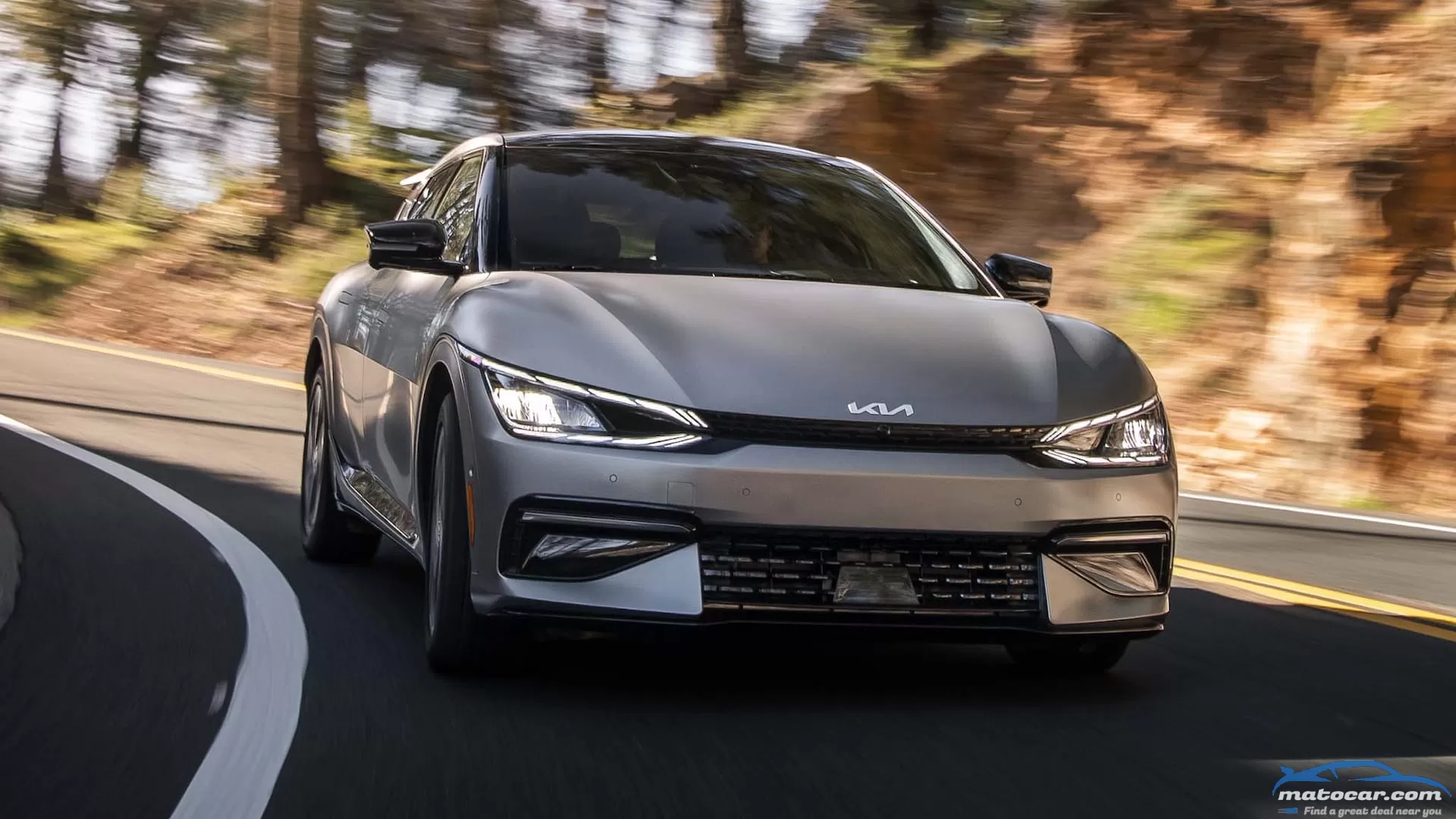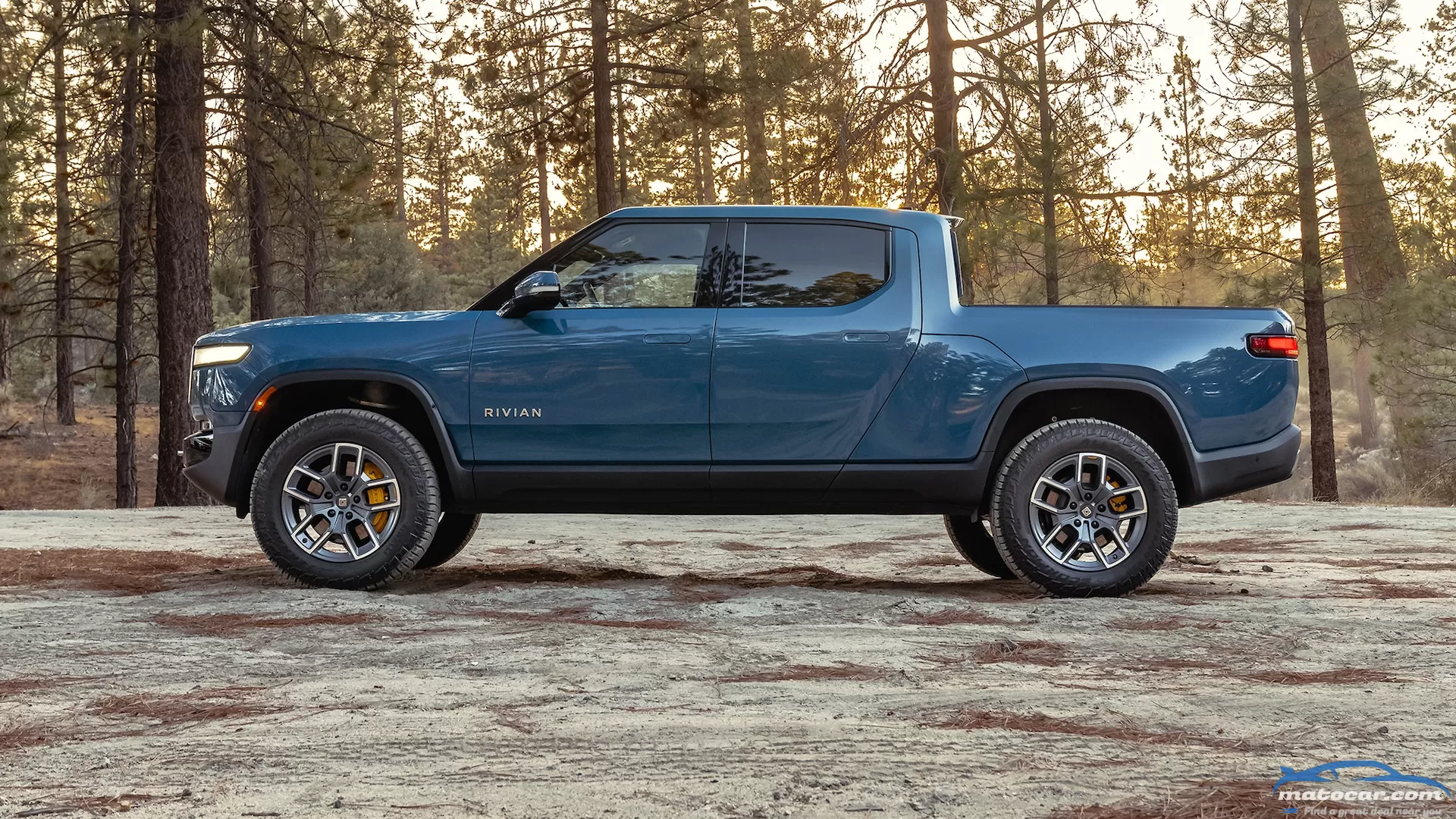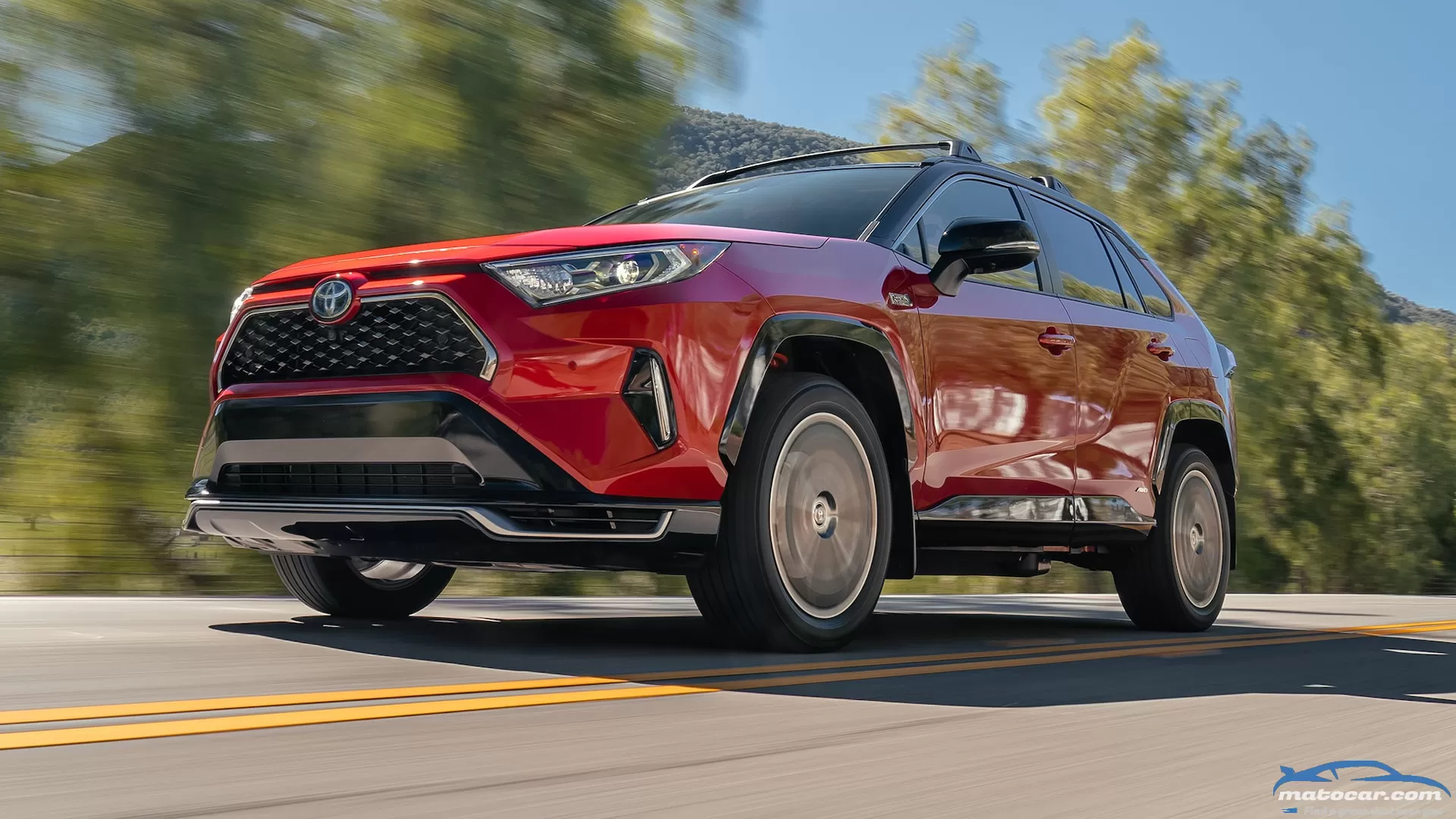2022 Kia EV6 First Drive: An Electrifying Example of What’s to Come

Around 2012 a certain upstart electric automaker out of California you might have heard of really started to show car buyers the myriad perks of engineless driving. Kia says its top brass took notice, foresaw change, and that same year commanded its ranks to pivot toward electrification. Initial products of that effort, the Niro and Soul EVs, highlighted the challenges of creating electric cars with fewer compromises than compelling factors. Neither left Tesla looking over its shoulder for Kia, but neither did Kia give up trying to create a standout EV. The EV6 is the result of that decade-long push.
Launching alongside the Hyundai Ioniq 5 and Genesis GV60—all three share the Electric-Global Modular Platform, E-GMP, set to underpin numerous upcoming HMG products—the EV6 does what earlier electric Kias could not: It appeals on multiple levels, among them style, practicality, technology, and performance.
EV-Sixy
Kicking off with the style aspect, there is the EV6's category-defying form, made possible by its not-based-on-a-gas-car, clean-sheet design. At 184.3 inches, this dedicated electric is less than 1.0 inch longer than the 2023 Kia Sportage compact crossover. Yet the EV6's wheelbase spans 114.2 inches, identical to that of our 2020 SUV of the Year winner, the one-size-up three-row Telluride. At 74.0 inches wide, it's almost a half an inch broader than the largish Kia Stinger. The 6.1 inches of ground clearance is slightly less than offered by the subcompact Soul, backing up the visual impression of lowness. A Volkswagen ID4 or Ford Mustang Mach-E stand at least 3.0 inches above the 60.8-inch-tall EV6; its Hyundai Ioniq 5 platform-mate is more than 2.0 inches taller.
Dramatic proportions complement the dramatic sheetmetal. Fiercely squinting headlights capture attention at the front, notably free of the "tiger nose" grille providing familial recognition between combustion-powered Kia vehicles. Behind those, the absence of an engine allows the hood to be almost impossibly compressed; this clamshell stamping cleanly integrates shutlines with the top of the headlights and wheel arches. The sharp rake of the A-pillar is mirrored by the rear windshield—elements in particular that keep the EV6 from being lumped in with conventional SUVs, and rather, impart it with a sporty, sleek wagonoid presence.
Within that long wheelbase are E-GMP's batteries, offered in 58.0-kWh standard-range or 77.4-kWh long-range capacities. The standard pack is single-motor/rear-drive only, and dual-motor/all-wheel drive is available with the big battery. EPA-certified range for the EV6 is as low as 232 miles with the standard battery and as high as 310 miles on the big-battery, rear-drive model, while the big-battery, all-wheel-drive setup falls in between with 274 miles on a charge. It is one of today's most efficient EVs.
E-GMP's 800-volt charging capacity means that a 350-kW DC fast charger can jump the battery from 10 to 80 percent in less than 20 minutes—very quick. The Ioniq 5 and GV60 share these capabilities, though the Genesis is offered exclusively with the 77.4-kWh battery.
The wheels aren't all that the battery can power. Its available vehicle-to-load (V2L) functionality allows external electric devices to plug in, creating the potential to run accessories anywhere the EV6 can travel. That load can even go to a different electric vehicle in need of juice. Or it can be used to make actual juice; we witnessed V2L firsthand as a blender plugged into an EV6 puréed a tasty tomato soup during our drive's lunch stop.
How Does It Drive?
Kia invited us to drive the EV6 through hills and valleys in Northern California's Sonoma, Lake, and Mendocino counties. The verdant scenery is fine, but the area's incredibly technical and sinuous roads are better.
Having already sampled the standard-battery, rear-drive EV6 overseas, we focused our drive time on the big-battery, all-wheel-drive version of the EV6. Its 320 hp and 446 lb-ft of torque is delivered smoothly, linearly, and immediately—not so different from other similarly powerful EVs, but still thrilling. The EV6 rapidly reaches any speed within the range of posted limits; Kia estimates a 5.1-second 0-60-mph time, likely conservative given the 4.4-second sprint our test team recorded from an equally powerful Ioniq 5.
The accelerator pedal's directness makes shifting the car's balance intuitive. It is easy to get the EV6 to squat down on its rear tires and leap out of corners. Toggling through Eco, Normal, Sport, and Snow drive modes changes the pedal's responses, from intentionally lazy in Eco to almost alarmingly aggressive in Sport. Those modes also change the torque balance between the front and rear drive motors, minimizing the front's involvement in Eco to maximize range and adjusting the split dynamically in Sport to optimize traction.
Don't mistake those paddles on the steering wheel for shifters—they're toggles that allow the driver to choose the level of regenerative braking. The driver can completely switch off the regenerative effect (like engine braking), allowing the EV6 to keep momentum when the accelerator is lifted. When fully armed, the regenerative function allows for one-pedal driving—which Kia calls I-Pedal—by slowing the vehicle strongly, even on downhill gradients. In I-Pedal or any of the three levels below it, the driver can choose their desired braking effect while putting charge back into the battery.
These options proved useful on varied roads. On straight, flat sections where a consistent speed should be maintained, we'd switch regen off to ease coasting. If the road turned downhill, we'd tap to a higher setting to keep speed from building and recharge. On twisty sections we'd alter the settings depending on the corner ahead, similar to dropping gears in a combustion car for engine braking. Through town, I-Pedal made it easy to keep with traffic and avoid the friction brakes. When we did press the brake pedal, transitions between regen and friction were typically imperceptible. There's also a Sport mode for that pedal, which firms it up and shortens its travel slightly.
An Electric Carving Knife
As we discovered in our earlier drive, ex-BMW engineer Albert Biermann's tuning acumen is evident in the EV6's handling. (The former BMW M boss took charge of Hyundai Motor Group's R&D department in 2018, and although he recently retired from that post, his legacy is sealed in the EV6's E-GMP platform; Kia calls it Biermann's capstone project.) The steering's quick ratio and relatively light effort make the vehicle easy to place on a road, especially given its width and wheelbase. How the steering and powertrain interact makes the EV6 feel pointy, engaging.
Yet its claimed curb weight of 4,661 pounds is obvious. Like with other EVs packing an underfloor battery, the center of gravity is low, which minimizes body roll. Yet a feeling of inertia, of the car's weight straining against its tires, is a factor in any fast bend. The GT-Line examples we drove have no chassis changes over the lower Light or Wind trims, but their 235/45R20 tires give a clearer picture of available grip.
Again that weight is felt in how the EV6 handles undulations, but its body motions are predictable and adeptly controlled. Ultimately, the EV6 comported itself enjoyably on the truly demanding roads Kia plotted for our drive route—and the dual-motor version we zeroed in on here helps offset that heft when punching out of corners. The Kia seems accurately positioned as a sporty counterpart to the Ioniq 5, while the upcoming Genesis GV60 should feel more luxurious.
… And a Comfortable Cruiser
In terms of highway cruising, the EV6 is one of the most relaxing vehicles we've sampled as of late. At such speeds it feels eminently settled and smooth. Wind noise is hardly intrusive, though it is noticeable only due to the absence of other mechanical sounds. The latest version of Kia's Highway Drive Assist, which we've found useful and effective in other contemporary Kias, makes things even easier for those willing to give up steering and accelerator control to a computer on the freeway.
Although the sections of Highway 101 we traveled are coated in ultra-smooth pavement, most of the rest of the drive route's roads were not. Unlike our experience in the Ioniq 5, we felt textures and imperfections through the EV6's suspension and steering wheel, though it comes off more as a feeling of connection than harshness. Impacts are felt but comfortably rounded off. Genesis may opt for a plusher tune in its interpretation of E-GMP, but Kia's rendition balances ride and handling impressively.
Sustainable, Autonomous, and Sporty?
The EV6 is the tip of the brand's electric spear. Kia is readying a diverse range of electrified vehicles, and it plans to invest $25 billion into 11 new global EVs by 2026. Sustainability will be a focus, and to that end the EV6's interior contains the equivalent of approximately 100 beverage bottles' worth of recycled plastic, as well as vegan leather upholstery. But the brand admits that it still has things to learn in making its battery sourcing and manufacturing processes greener end to end.
Autonomy is the buzzword of the day, yet it's intriguing how Kia has delivered such a driver-focused vehicle while touting its goals in this area. The brand assures us that self-driving cars won't dominate its lineup. Drivers who enjoy driving will still have options—to be sure, they have one now in the 2022 Kia EV6—but inevitably future electric Kias will push harder on supported-driving technologies. Until that day, the EV6 will shine not for its futuristic tech but rather for its delightful dynamic characteristics and, get this, its affordability. The EV SUV starts at under $35,000—kind of—and is available for sale in Kia dealerships in all 50 states.
Looks good! More details?2022 Kia EV6 BASE PRICE $42,115-$57,115 VEHICLE LAYOUT Front- and rear-motor, RWD/AWD, 5-pass, 4-door SUV MOTORS 168-hp/258-lb-ft AC permanent-magnet electric; 225-hp/258-lb-ft AC permanent-magnet electric; 99-hp/188-lb-ft front and 225-hp/258-lb-ft rear AC permanent-magnet electric, 320-hp/446-lb-ft comb TRANSMISSIONS 1-speed automatic CURB WEIGHT 4,000-4,700 lb (mfr) WHEELBASE 114.2 in LENGTH X WIDTH X HEIGHT 184.3 x 74.0 x 60.8 in 0-60 MPH 5.1-8.0 sec (mfr est) EPA CITY/HWY/COMB FUEL ECON 116-136/94-101/105-117 mpg-e ENERGY CONSUMPTION, CITY/HWY 29-31/25-33 kWh/100 miles CO2 EMISSIONS, COMB 0.00 lb/mile (at vehicle) ON SALE IN U.S. Now Show AllYou may also like
We've got some good news and bad news for if you're one of the thousands who've pre-ordered or are interested in purchasing the 2022 MotorTrend Truck of the Year (not to mention the only electric vehicle to cross the Trans-America Trail), the Rivian R1T pickup, and its SUV sibling, the R1S. The good news is that the company is expanding its R1T and R1S lineup, now offering dual-motor variants and a new battery pack. The bad news is that it's going to cost more for less Rivian, as quad-motor prices rise to make room for the new two-motor versions of the R1T and R1S, which will cost the same as the entry-level quad-motors did before.New Homebuilt MotorsAs we long suspected, Rivian-built dual-motor variants are now slated to join the R1 lineup. Available starting in 2024, these new Rivian designed, engineered, and built motors (one installed at each axle) are said to be good for over 600 hp and 600 lb-ft of torque, and Rivian promises a 4.0-second 0-60 mph time, making the dual motor R1T about a second slower to 60 mph than the quickest four-motor R1T we've tested. Current quad-motor Rivians produce 835 hp and 908 lb-ft of torque.Rivian also says that its new motors are simpler, lighter, and cheaper to build than the supplier-sourced motors on today's R1S and R1T.The California-based automaker isn't publicly committing to utilizing its new motors on the quad-motor R1S and R1T, but sources at the company have told us that Rivian is currently hard at work on a quad-motor R1X super SUV that makes 1,200 hp and 1,200 lb-ft. We're not math experts, but we're fairly certain that if you put four of Rivian's new motors together, the output would add up to 1,200 ponies and pound-feet.We suspect that in addition to the R1X, a detuned quad-motor R1S and R1T featuring the new motors is in the cards given CEO RJ Scaringe's desire to bring core competencies in-house.Rivian's new battery packIn addition to the new twin-motor models, Rivian today announced its new Standard battery pack will go on sale in 2024. Available only on dual-motor R1S' and R1Ts, the Standard pack joins the Large pack (on-sale now), and Max pack (slated for 2023). Dual motor R1s will be able to travel about 260 miles on a charge with the Standard pack, 320 miles with the Large pack, and over 400 miles with the Max pack, all pending EPA certification.Quad-motor R1Ts will continue to be available with only the Large and Max packs. The Large pack is the only one currently available; it nets the R1S an EPA-estimated range of 316 miles and R1T 314 miles.Price increases for the R1Although Rivian is keen to point out that base prices for the R1T and R1S remain unchanged at $68,575 and $73,575, respectively, that's a bit disingenuous, as the dual motor, standard pack is the new base configuration for the R1 line. Previously, those prices applied to quad-motor, Large pack models.Those quad-motor prices rise from $68,575 for a Large pack R1T Explore model to $80,575, and from $73,575 for a Large pack R1S Explore to $85,575. Max pack prices rise as well. The cheapest quad-motor R1T Max pack is now $90,315. The R1S, which has a shorter wheelbase than the pickup (and therefore less underbody space for batteries), is unavailable with the Max pack.Dual-motor Large pack R1Ts will begin at $74,575, and R1S' will begin at $79,575. Prices for the dual-motor R1T Max Pack start at $84,575.What does this mean for current Rivian reservation holders?Rivian chief growth officer Jiten Behl points to global supply chain shortages, increasing component parts, inflation, and semi-conductor delays as the primary reason for the price changes. "This rise in cost and complexity due to these challenging circumstances necessitate an increase to the prices of the R1T and R1S models we offer today — prices which were originally set in 2018. This decision will allow us to continue to offer competitive products that maintain the high standard of quality, performance, and capabilities that our customers expect and deserve from Rivian," he said in a statement issued to the media.A source at the company told us that customers who are already in the final steps of completing their R1T orders won't be affected, but unfortunately for the vast majority of existing Rivian reservation holders, the price increases will apply.While the price changes likely won't sit well with existing R1 customers, Rivian no doubt hopes that the new two-motor variants will cushion the blow.
With SUVs increasingly becoming the default choice for single-car families across the U.S., automakers are working hard to make them more fuel efficient. Last year's 20 most fuel-efficient SUVs averaged an impressive 55.5 mpg combined; this year, the 20 most fuel-efficient SUVs bump up their combined average to 60.9 mpg. And that figure doesn't include the increasing availability of electric SUVs. Last year there were about nine SUV EVs on sale. This year? Seventeen and counting. Provided you're not ready to make the leap to an electric SUV (all of which would make this list), what follows are the 20 SUVs that achieve the best gas mileage on the market in 2022.But before we dig in, some quick housekeeping. Our list of the most fuel-efficient SUVs for the 2022 model year was gleaned using EPA test data, and all vehicles are ranked in order from 20 to 1 using their combined mpg/mpg-e figure. When we had a tie, we then factored in electric-only range (if applicable) and highway fuel economy to break it.Plug-in hybrid, hybrid, gas, and diesel SUVs were all eligible to make this list, but as you'll soon see, plug-in hybrid and hybrid SUVs dominate. As previously mentioned, the 17 electric SUVs on sale in the U.S as of this writing weren't included. In case you're curious, they are:Tesla Model Y (up to 129 mpg-e)Hyundai Kona Electric (120 mpg-e)Kia EV6 (up to 117 mpg-e)Chevrolet Bolt EUV (115 mpg-e)Hyundai Ioniq 5 (up to 114 mpg-e)Kia Niro EV (112 mpg-e)Tesla Model X (up to 105 mpg-e)Ford Mustang Mach-E (up to 101 mpg-e)Volkswagen ID4 (up to 99 mpg-e)Audi Q4 E-Tron (up to 95 mpg-e)Mazda MX-30 (92 mpg-e)Volvo C40 Recharge (87 mpg-e)Volvo XC40 Recharge (85 mpg-e)Audi E-Tron (up to 78 mpg-e)Jaguar I-Pace (76 mpg-e)Porsche Taycan Cross Turismo (up to 76 mpg-e)Rivian R1S (69 mpg-e)Without further ado, here are the 20 most fuel-efficient SUVs you can buy today, in order from worst to first.
Mecum is auctioning a rare 1942 Harley-Davidson XA military motorcycle from World War II that boasts many early engineering firsts in the company's long history. Developed after the U.S. and its allies came up against superior BMW motorcycles during the war, it aimed to beat the Nazis at their own game. Now one newly restored example can be yours.The XA was an attempt to overcome the Nazis' all-terrain superiority, particularly in North Africa, and to address issue that American bikes had involving chains in rough terrain. Harley landed on a shaft drive setup, solving that problem. And the most expedient way to engineer a shaft-drive bike was to reverse-engineer an existing one, like the excellent overhead-cam BMW R75M used by the enemy. Perhaps unable to get its hands on an R75M, the XA copied the civilian flathead R71, which wasn't quite as well-optimized for the task.Despite being a copycat, be reassured that the XA is still a true Harley-Davidson. Around 1,000 XAs were built in Milwaukee for the U.S. Army during the war, according to the Mecum, and it resulted in many production firsts for the company. It is claimed to be Harley-Davidson's first shaft-drive, four-speed, foot-shift and hand-clutch motorcycle, and also the first equipped with two carburetors. The motor's opposed cylinders were positioned "across the frame" for improved cooling in the wind compared to Harley's longitudinal V-twin designs of the time. It was also the first Harley to feature a rear-suspension plunger, and had a top speed of over 60 MPH back in 1942. The XA Type II (this example is a Type I) got Harley's first telescopic forks, which didn't reappear on Harley-Davidson designs again until years after the war.The XA, innovative as it was relative to Harley's native bikes, wasn't a success. Consider that Harley produced over 80,000 units of its V-twin motorcycles during the war, while the XA was only ordered for testing. Ultimately, the Army declined to order any more, and its role fell to the Jeep, far superior for general purpose tactical mobility. You may find it a little more adaptable to suit your interests, which are hopefully more peaceful.This isn't the first time this exact motorcycle has been auctioned in recent years. It appears to have previously been auctioned by Mecum in 2015, according to the matching plate numbers in both sets of images, where it failed to meet reserve at a high bid of $30,000. It was expected to go for as much as $50,000, but this time it's offered with no reserve.The restoration finished this XA with leather saddle-bags, a beautiful speedometer detail, and according to the listing, the auction lot includes a special mounted case for a period-appropriate "non-firing" Thompson sub-machine gun that is apparently included in the deal. The auction is in Vegas, in case that wasn't obvious.Whatever else this XA is, it's a newly restored WWII Harley-Davidson that's also particularly rare and interesting, and at least we know the bike should run very cool and catch plenty of attention. The lot is up for auction with no reserve until Jan. 29, according to the Mecum website.




0 Comments